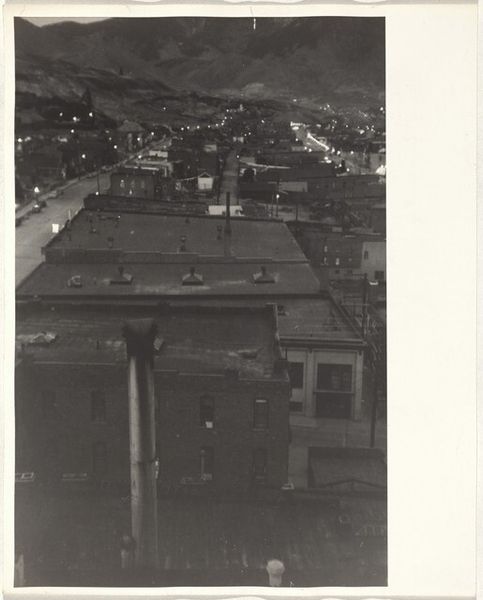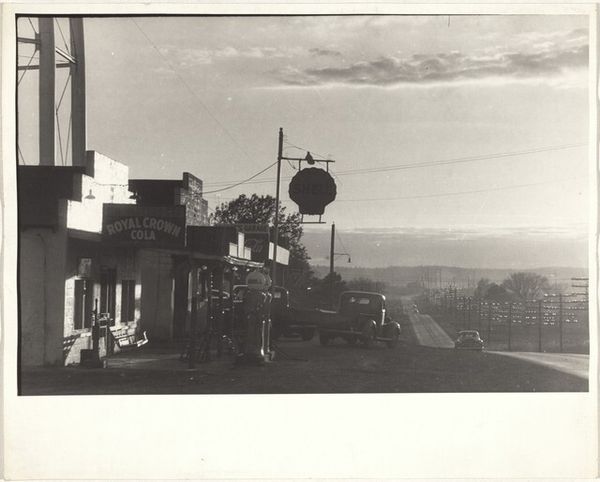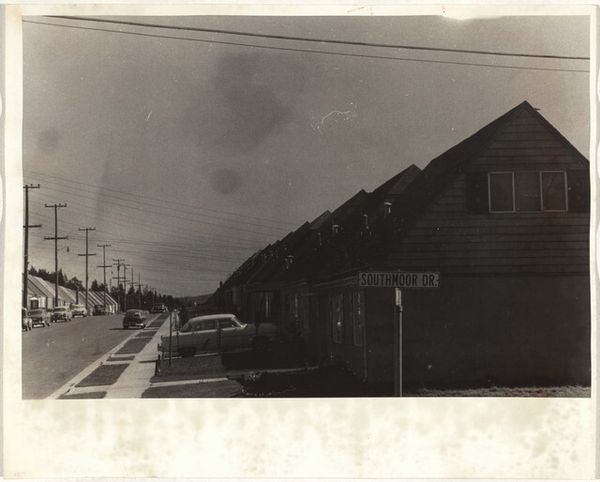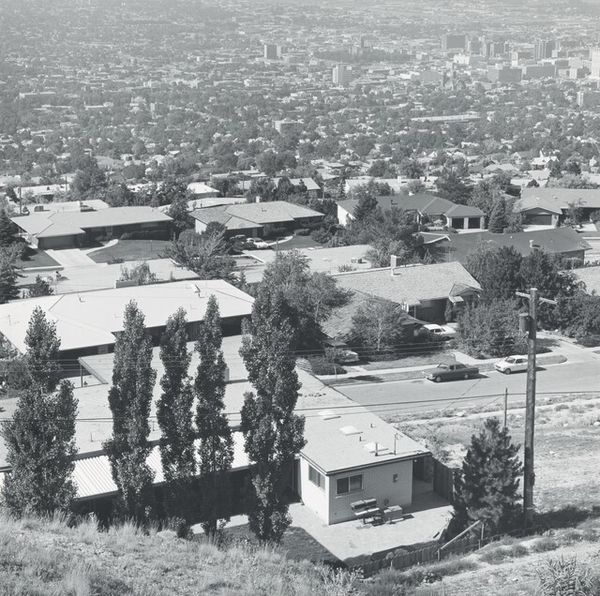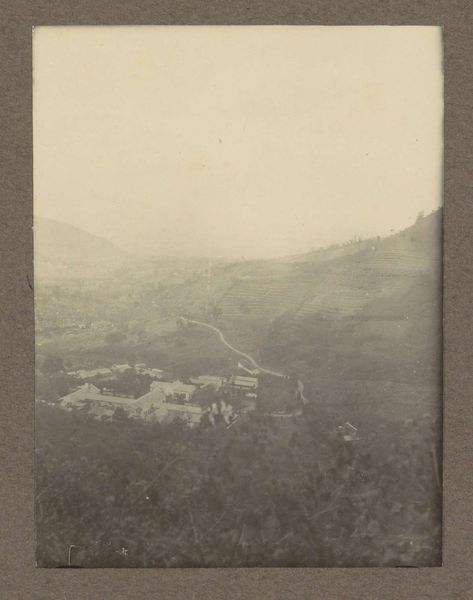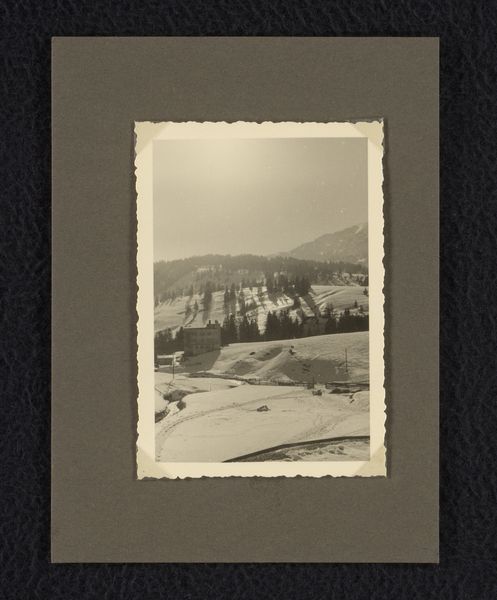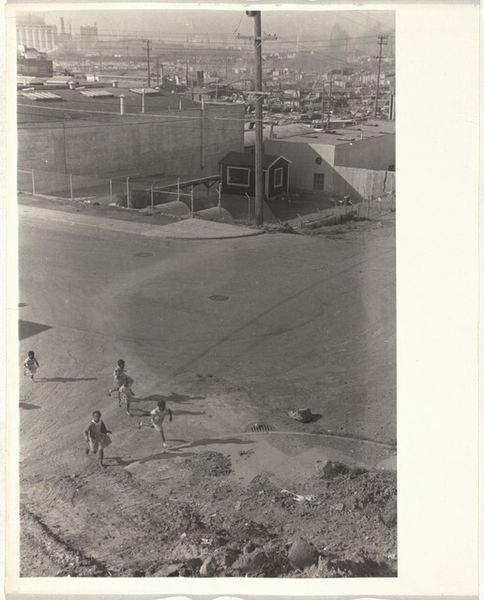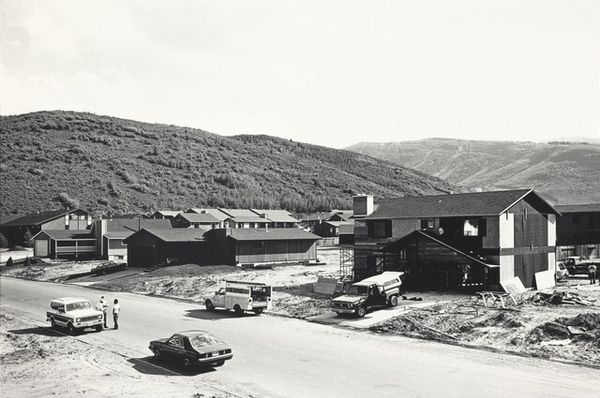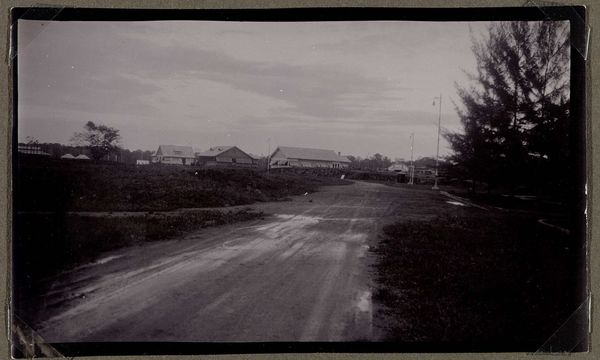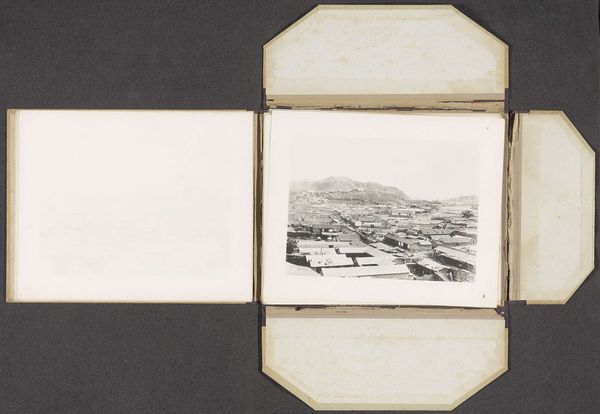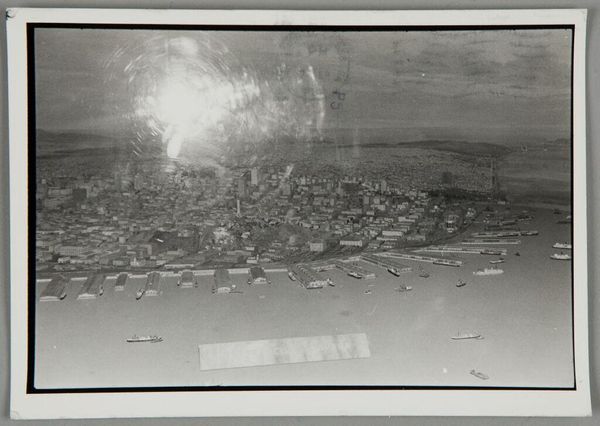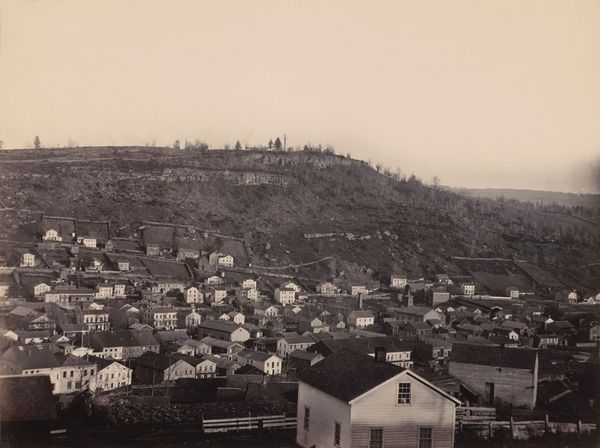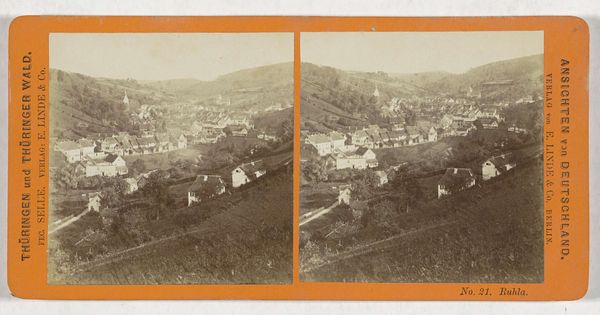
print, photography, gelatin-silver-print
#
black and white photography
# print
#
landscape
#
archive photography
#
street-photography
#
photography
#
gelatin-silver-print
#
monochrome photography
#
pop-art
#
monochrome
#
monochrome
Dimensions: sheet: 20.3 x 25.3 cm (8 x 9 15/16 in.)
Copyright: National Gallery of Art: CC0 1.0
Curator: The atmosphere in this print is immediately captivating. There is such a sense of depth, created by the high vantage point and layered elements, while it gives an off-kilter, obscured point-of-view to something familiar, making it feel surreal and a bit melancholic. Editor: Indeed, there's a powerful stillness to this work by Robert Frank titled "View from Hotel Window--Butte, Montana," created in 1956. It’s a gelatin silver print that freezes a moment in time with such stark clarity. I find the gelatin silver print to add to the somber aesthetic, offering both an immediate view of urban decline, and also functioning as a physical index for the decline of American labor in cities like Butte. Curator: The heavy reliance on black and white starkly contrasts the geometry and texture of urban architecture with the softness of atmospheric conditions and a dirty window. The composition frames an urban tableau: flat rooftops take up most of the view with mountains in the distance, blurring near the smoke that appears above. There’s such beautiful harmony between shadow and light. The window itself acts as a framing device, pulling the eye into the scene, its blur abstracting everything beyond. Editor: Absolutely. The industrial elements visible – the smoke stacks, the monotonous rooftops, the suggestion of human activity obscured by the dirty glass – all speak to Butte's history as a booming mining town confronting a shift in industry. This is not merely an aesthetic exercise; it's documentation of urban and social change. This image comes directly out of Frank’s larger project, _The Americans_, in which he captures this undercurrent of social disruption with a critical gaze. It invites conversation about production and labor, especially in small-town economies and histories. Curator: I appreciate that perspective. Thinking about it more, that atmospheric blurring and the stark tonal range serve to unify the components and offer both an interesting abstraction of the shapes depicted and some degree of removal from the gritty industrial town in view. Ultimately, the tension between what's concealed and what’s revealed drives its visual tension. Editor: Well, its capacity to merge formalism with its political project is why this image continues to move audiences today, and to remind us about how American industrial life impacted our social fabric. The materiality speaks volumes about the social structures inherent in that society, at that moment. Curator: You are right! The picture has much to reveal when looked at from both points of view. Thanks!
Comments
No comments
Be the first to comment and join the conversation on the ultimate creative platform.
